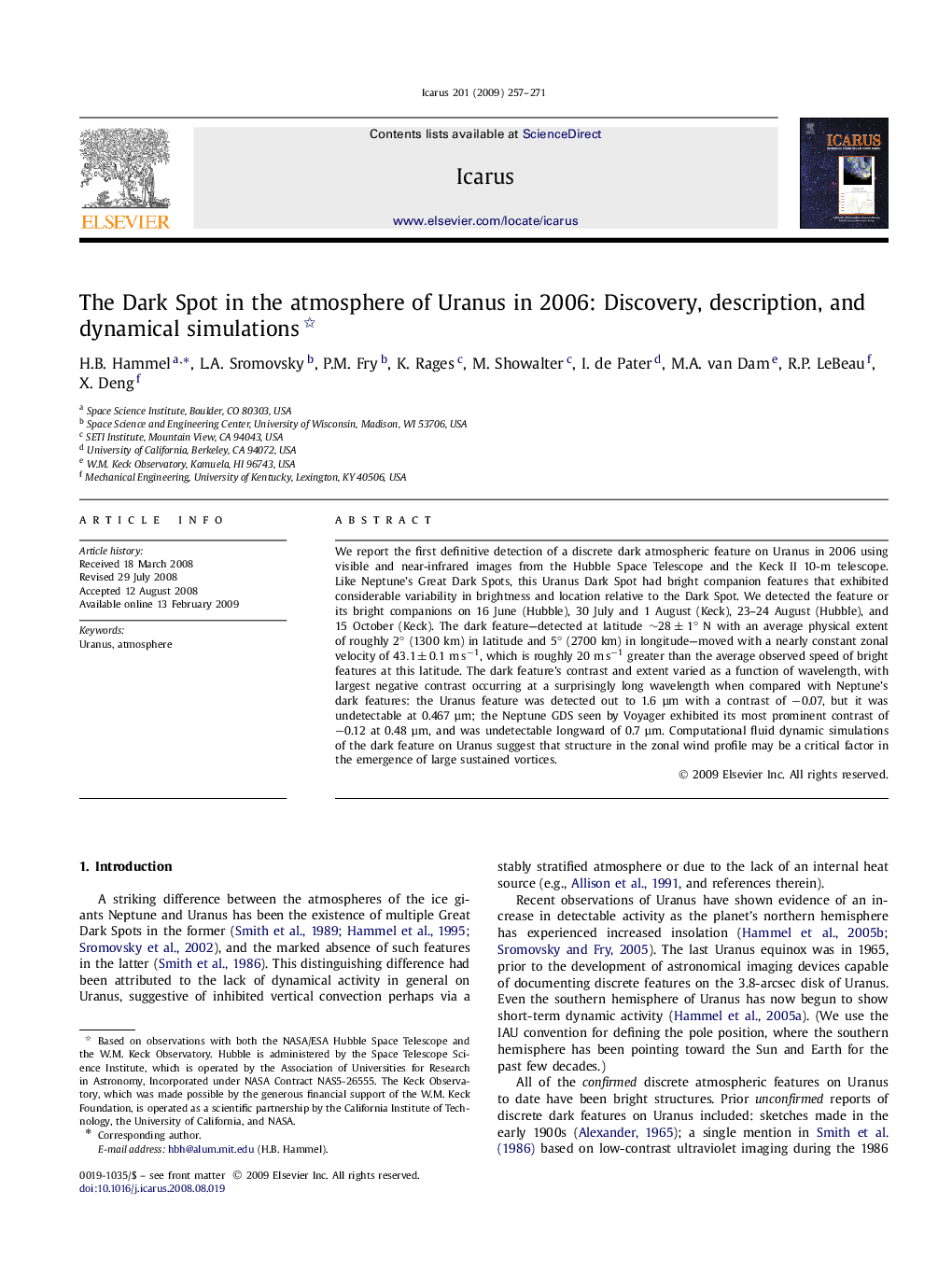| Article ID | Journal | Published Year | Pages | File Type |
|---|---|---|---|---|
| 1775336 | Icarus | 2009 | 15 Pages |
Abstract
We report the first definitive detection of a discrete dark atmospheric feature on Uranus in 2006 using visible and near-infrared images from the Hubble Space Telescope and the Keck II 10-m telescope. Like Neptune's Great Dark Spots, this Uranus Dark Spot had bright companion features that exhibited considerable variability in brightness and location relative to the Dark Spot. We detected the feature or its bright companions on 16 June (Hubble), 30 July and 1 August (Keck), 23-24 August (Hubble), and 15 October (Keck). The dark feature-detected at latitude â¼28±1° N with an average physical extent of roughly 2° (1300 km) in latitude and 5° (2700 km) in longitude-moved with a nearly constant zonal velocity of 43.1±0.1 msâ1, which is roughly 20 mâsâ1 greater than the average observed speed of bright features at this latitude. The dark feature's contrast and extent varied as a function of wavelength, with largest negative contrast occurring at a surprisingly long wavelength when compared with Neptune's dark features: the Uranus feature was detected out to 1.6 μm with a contrast of â0.07, but it was undetectable at 0.467 μm; the Neptune GDS seen by Voyager exhibited its most prominent contrast of â0.12 at 0.48 μm, and was undetectable longward of 0.7 μm. Computational fluid dynamic simulations of the dark feature on Uranus suggest that structure in the zonal wind profile may be a critical factor in the emergence of large sustained vortices.
Keywords
Related Topics
Physical Sciences and Engineering
Earth and Planetary Sciences
Space and Planetary Science
Authors
H.B. Hammel, L.A. Sromovsky, P.M. Fry, K. Rages, M. Showalter, I. de Pater, M.A. van Dam, R.P. LeBeau, X. Deng,
